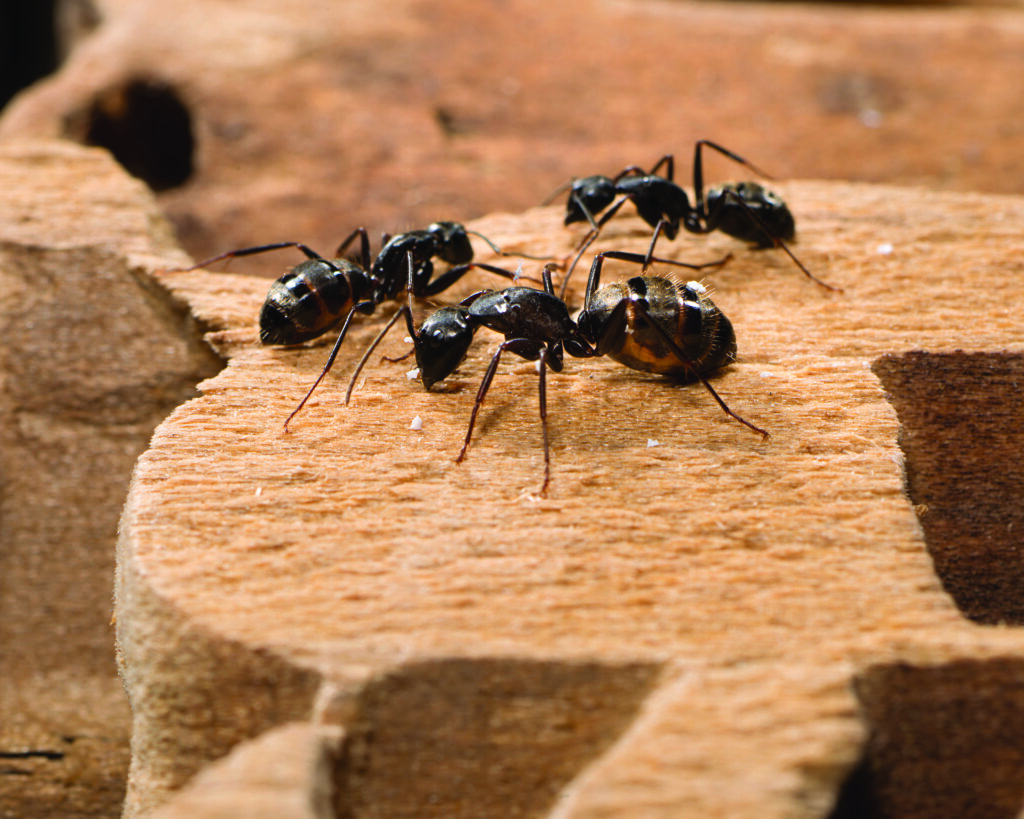Get rid of this most common home invader
The days and nights are beginning to warm, and with the help of April showers, the outdoors in New England are coming back to life. Unfortunately, this also means an increase in one of the most prevalent pests – ants.
Often considered the No. 1 nuisance pest, ants also pose significant health and property risk as they destroy wood and contaminate food items.
Most ants thrive in warm and moist conditions, which is why it’s best to eliminate moisture or standing water near or inside the home. In some cases, the
only way to completely address an ant infestation is to call a qualified pest professional like Braman Termite & Pest Elimination.
In order to fight the problem, you first have to identify your enemy. Here are some of the most common home ant invaders in southern New England:
- Carpenter Ants: This destructive species hollows out nests in both dry and moist wood, though they prefer the latter. They can be particularly hard to remove since their nests can be more difficult to locate; for this reason, we offer a full one-year warrantee with a one-time carpenter ant service.
- Large Yellow Ants: Sometimes called citronella ants, these emit a distinctive odor when they are crushed. They often nest in rotting wood or under landscaping elements near the house where they feed on honeydew excreted by aphids on ornamental plants. They are frequently confused with termites when they swarm into the living areas of homes. Although this can be disconcerting, they do not attack structures or forage for food inside the home.
- Pavement Ants: These ants get their name from their preference for nesting under stones, along curbs or in pavement cracks. Pavement ants feed on a wide variety of foods. It is when they enter your home to forage in large groups that pavement ants, who can sting and bite, become a true nuisance.
- Pharaoh Ants: These very small ants nest in hidden, well-protected areas throughout buildings, including in walls, behind baseboards, in refrigerator insulation and other undisturbed indoor spaces. They prefer sweets, but also consume grease and even shoe polish. They live in extremely large colonies and can spread disease.
- Thief ants: One of the smallest ants, thief ants often steal larvae and pupae from neighboring colonies to use as food. Other favorite foods include anything greasy and containing protein, such as nuts, meats, cheese, peanut butter and sweets. Because worker thief ants are small enough to enter food packaging, they can become a nuisance in the kitchen. Outside, thief ants forage for dead insects and rodents, which means they can transmit pathogens into your home and food.
Of these, carpenter ants are probably the most common, destructive ants in our region. Familiarize yourself with these five signs carpenter ants may be in your home:
1. The presence of medium to large black ants in your home in springtime.
2. Piles of sawdust that reappear after being removed.
3. Faint unexplained rustling noises from inside of walls or woodwork.
4. Numerous large winged carpenter ants inside your home.
5. Wood beams that sound hollow when tapped.
If you see carpenter ants or other ant species in your home, don’t delay hoping they will go away. Call Braman today for effective, guaranteed carpenter ant elimination at 800-338-6757.

